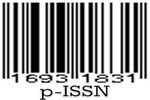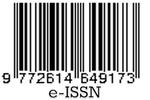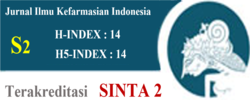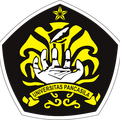Ethanol Extract Activity Test of 70% Calliandra calothyrsus Meisn. Leaves as a Lowering of Blood Glucose Levels in Hyperglycemic Rats
Abstract
Diabetes mellitus (DM) is an increase in blood glucose levels due to impaired metabolism of carbohydrates, fats, and proteins. Red kaliandra leaf (Calliandra calothyrsus Meisn.) contains tocopherol, carotenoid, flavonoid, saponin, and tannin compounds are natural sources of non-enzymatic antioxidants. The active compound has inhibitory activity against the α-glucosidase enzyme so that it can be potential as an antidiabetic. This study aims to determine the activity of 70% ethanol extract of red calliandra leaves on the decrease in blood glucose levels in male white rats Sprague Dawley hyperglycemia strain. Test animals were divided into 6 groups consisting of normal controls (standard feed), negative controls (alloxan induction), positive controls (metformin HCL dose 51.38 mg/kg), group I dose (50 mg/kg), dose II (100 mg/kg), and dose III (200 mg/kg). Data were analyzed using one way ANOVA and continued by Tukey test. The results showed that doses 1, 2, and 3 can reduce blood glucose. Dose 3 had a decrease in the percentage of 58.08% which was comparable to a positive control (metformin HCl dose 51.38 mg/kg) of 63.85%.
References
2. Orishadipe AT, Okogun JI, Mishelia E. Gas chromatography-mass spectrometry analysis of the hexane extract of Calliandra portoricensis and its antimicrobial activity. African J Pure Appl Chem. 2010;4(7):131-134.
3. Moharram FA, Marzouk MSA, Ibrahim MT, Mabry TJ. Antioxidant galloylated flavonol glycosides from Calliandra haematocephala.N a t P r o d R e s . 2 0 0 6 ; 2 0 ( 1 0 ) : 9 2 7 - 9 3 4 . doi:10.1080/14786410500378494.
4. Zhang R, Yao Y, Wang Y, Ren G. Antidiabetic activity of isoquercetin in diabetic KK -A y mice. Nutr Metab. 2011;8(1):85. doi:10.1186/1743-7075-885.
5. Ruhe RC, McDonald RB. Use of antioxidant nutrients in the prevention and treatment of type 2 diabetes. J Am Coll Nutr. Published online 2001. doi:10.1080/0 7315724.2001.10719169.
6. Dheer R, Bhatnagar P. AStudy of the antidiabetic activity of Barleria prionitis Linn.; 2010. doi:10.4103/0253- 7613.64493.
7. Tr TA, Sutriana A, Aliza D, et al. Uji efek ekstrak etanol daun kucing-kucingan (Acalypha Indica L.) terhadap kadar gula darah tikus putih jantan galur wistar (Rattus novergicus). J Ilm Farm. Published online 2010.
8. Abo-elhamd AM, Aboul-enein AM, Mohamed SM, et al. Chemical characterization, antioxidant and antihepatotoxic activities of Calliandra haematocephala (Hassk.), growing in Egypt. J Chem Pharm Res.
2016;8(4):828-845.
9. Depkes R. Parameter standar umum ekstrak tumbuhan obat. Vol Cetakan 1. Direktorat Jendral Pengawasan Obat dan Makanan; 2000.
10. Hanani E. Analisis fitokimia. Buku Kedokteran EGC; 2015.
11. Kementerian Kesehatan Republik Indonesia. Farmakope Indonesia Edisi V.; 2014. doi:10.1590/ S1984-82502011000100002
12. Szkudelski T. The mechanism of alloxan and streptozotocin action in B cells of the rat pancreas. Physiol Res. Published online 2001.
13. Reagan Shaw S, Nihal M, Ahmad N. Dose translation from animal to human studies revisited. FASEB J. Published online 2008. doi:10.1096/fj.07-9574lsf
14. Dwitiyanti H, Sunaryo I, Resty K. Uji aktivitas anthiperkolesterolemia fraksi etil asetat ekstrak daun kelor (Moringa oleifera Lam.) terhadap kadar kolesterol total dan LDL kolesterol pada hamster hiperkolesterolemia. Pharmacy. Published online 2015.
15. Zuraida Z, Sulistiyani S, Sajuthi D, Suparto IH. Fenol, flavonoid, dan aktivitas antioksidan pada ekstrak kulit batang pulai (Alstonia scholaris R.Br). J Penelit Has Hutan. 2017;35(3):211-219. doi:10.20886/ jphh.2017.35.3.211-219.
16. Kumalasari E, Sulistyani N. Aktivitas Antifungi batang binahong (Anredera cordifolia (Tenore) Steen.) terhadap Candida albicans serta skrining fitokimia. J Ilm Kefarmasian. 2011;1(2):51-62.
17. Tatto D, Dewi NP, Tibe F. Efek antihiperkolesterol dan antihiperglikemik daun ceremai (Phyllantus acidus (L.) Skeels) pada tikus putih jantan (Rattus norvegicus) hiperkolesterol diabetes. J Farm Galen (Galenika J Pharmacy). 2017;3(2):157-164. doi:10.22487/ j24428744.0.v0.i0.8769.
18. Hoff J. Methods of blood collection in the mouse. Lab Anim (NY). 2000;29(10):47-53.

This work is licensed under a Creative Commons Attribution-NonCommercial-ShareAlike 4.0 International License.
Licencing
All articles in Jurnal Ilmu Kefarmasian Indonesia are an open-access article, distributed under the terms of the Creative Commons Attribution-NonCommercial-ShareAlike 4.0 International License which permits unrestricted non-commercial used, distribution and reproduction in any medium.
This licence applies to Author(s) and Public Reader means that the users mays :
- SHARE:
copy and redistribute the article in any medium or format - ADAPT:
remix, transform, and build upon the article (eg.: to produce a new research work and, possibly, a new publication) - ALIKE:
If you remix, transform, or build upon the article, you must distribute your contributions under the same license as the original. - NO ADDITIONAL RESTRICTIONS:
You may not apply legal terms or technological measures that legally restrict others from doing anything the license permits.
It does however mean that when you use it you must:
- ATTRIBUTION: You must give appropriate credit to both the Author(s) and the journal, provide a link to the license, and indicate if changes were made. You may do so in any reasonable manner, but not in any way that suggests the licensor endorses you or your use.
You may not:
- NONCOMMERCIAL: You may not use the article for commercial purposes.
This work is licensed under a Creative Commons Attribution-NonCommercial-ShareAlike 4.0 International License.

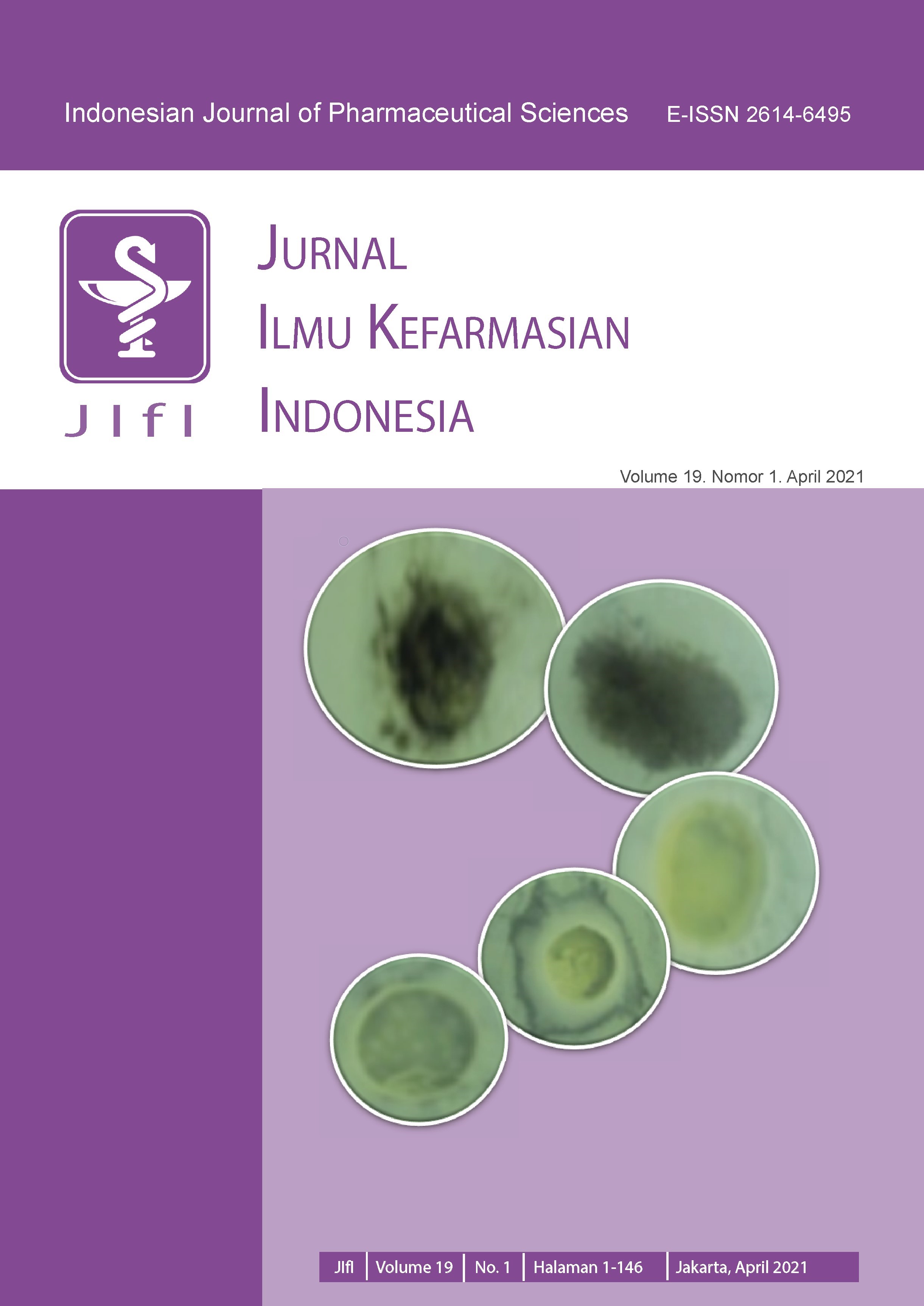



 Tools
Tools

